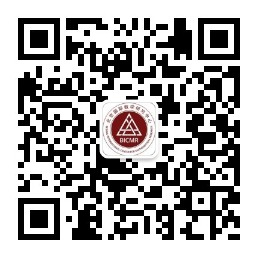Long-Term Special Program on Arithmetics and Geometry
Speaker(s): 陈华一, 田青春
Time: May 2 - July 26, 2013
Venue: 北京国际数学研究中心 82J12 教室 | 82号甲乙丙楼 82J04教室
Geometric Measure Theory in Banach and Metric Spaces
Time: from 2013-5-2 to 2013-5-24, Thursday and Friday 14:00-16:30
Place: 北京国际数学研究中心 82号甲乙丙楼 82J04教室
Speaker: Thierry De Pauw (Institut de Mathématiques de Jussieu)
Abstract: The Plateau problem asks for an m-dimensional possibly singular variety minimizing its area among all those bounded by a given boundary cycle in some ambient space X. In case m=2 and X is the 3 dimensional Euclidean space, this problem was solved in the 1930's by J. Douglas and T. Rado independently, using methods of complex analysis that do not generalize for m>2. In the 1960's H. Federer and W.H. Fleming developed their theory of normal and integral currents and solved the problem for arbitrary m when X is Euclidean space or a compact Riemannian manifold. They identified a subclass of those currents in the sense of G. de Rham that is closed under some appropriate weak* convergence and contains oriented manifolds or polyhedra. This is the class of integral currents, suitable for the Calculus of Variations.
The theory has been generalized in recent years to the case when the ambient space X is a (possibly infinite dimensional) Banach space or a metric space, and to the case of so-called flat chains with coefficients in an arbitrary complete normed Abelian group G. Including such groups allows for applications to immiscible fluids and irrigation problems, for instance. In case X is an Lipschitz neighborhood retract of some Banach spaces, the homology of flat chains with coefficients in G coincides with the singular homology of X.
In this graduate level course I will present the modern theory of flat chains with coefficients in G, with emphasis on the ambient space being an arbitrary Banach space. The theory was initiated by H. Whitney; W.H. Fleming; B. White; L. Ambrosio and B. Kirchheim; and more recently by R. Hardt and the present lecturer. I will cover basic material emphasizing the approximation procedure of flat chains by polyhedral chains, and of Lipschitz maps by PL maps, thereby illustrating the analogy with simplicial homology. Completion with respect to the flat norm adds powerful tools from analysis. As an example, I will treat the theory of slicing, originating in differential topology. The main results are the deformation theorem, the compactness theorem, the slice-nullity theorem, and the rectfiiability theorem.
Transcendence theory and slope method
Time: from 2013-7-4 to 2013-7-26, Thursday and Friday 9:00-11:00
Place: 北京国际数学研究中心 82J12 教室
Speaker: Mathilde Herblot (Université Paris VII)
Abstract: The slope method, invented by J.-B. Bost is a way of rewriting classical proofs of transcendence theory and of understanding them more geometrically. This course will first present some classical results in Diophantine approximation and transcendence theory and their classical proofs. Then we will introduce the basic notions of Arakelov geometry which are needed to present the slope method. We will see how this slope method can be applied to some `evaluation maps' to obtain applications to Diophantine approximation and transcendence theory.
An introduction to Berkovich geometry
Time: from 2013-7-4 to 2013-7-26, Thursday and Friday 13:00-15:00
Place: 北京国际数学研究中心 82J12 教室
Speaker: Amaury Thuillier (Université Lyon I)
Abstract: There are many (complementary) ways to define and study analytic spaces over a non-archimedean field. A specific aspect of Berkovich's approach is to produce topological spaces of classical type: locally compact and locally arcwise connected, with the homotopy type of a polyhedron (at least if one considers the analytification of an algebraic variety).
This connection with usual topology has a lot of useful consequences, and it is behind most of the many applications of Berkovich geometry. Among them: 1) Arakelov geometry, 2) Non-archimedean dynamical systems, 3) Asymptotic properties of linear systems, 4) Weight zero phenomena in algebraic geometry, etc.
The lectures should give a flavor of the general theory and a more detailed description of applications 1 and 4.
Introduction to rigid analytic geometry
Time: from 2013-7-4 to 2013-7-26, Thursday and Friday 15:30-17:30
Place: 北京国际数学研究中心 82J12 教室
Speaker: 李彬,张原草 (北京大学)
Abstract: In these lectures we will give an introduction to classical rigid analytic geometry along Tate's approach. We will begin from Tate algebras, introduce affinoid algebras and affinoid spaces, study their subdomains and coverings, proof Tate's acyclicity theorem, and construct general rigid spaces using Grothendieck topology, study the coherent modules on these spaces. We will also discuss the relationship between formal geometry and rigid geometry, i.e. the Raynaud theory, briefly. In final, we will compare the classical rigid spaces and Berkovich spaces.


